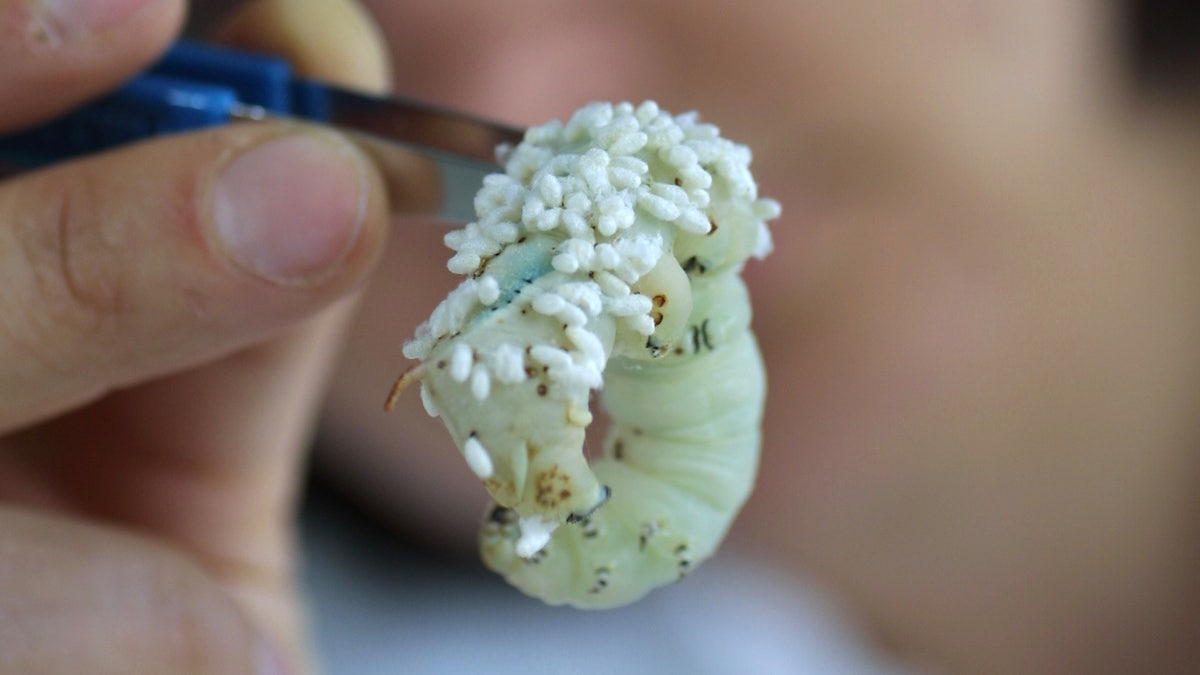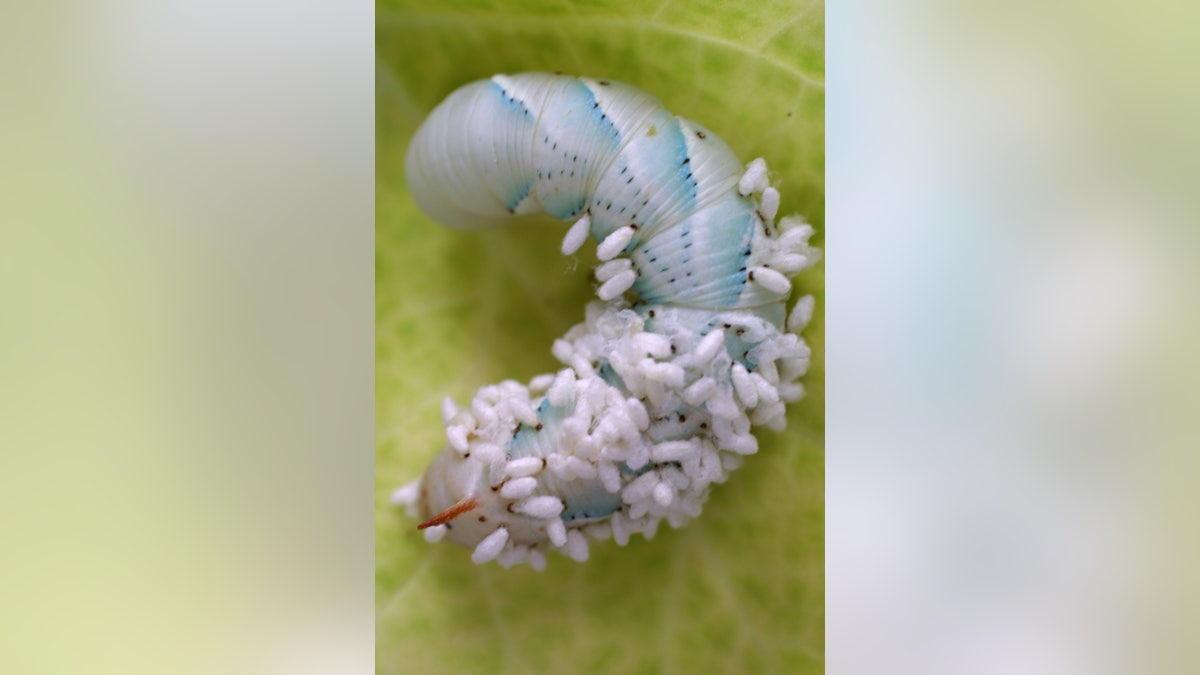
Droit cédés uniquement pour une utilisation interne (illustration de rapport, de cours, etc ) a l'exclusion de toute utilsation dans la presse sous quelques formes que ce soit. (IRBI-CNRS Jérome Lesobre)
When a wasp injects its eggs into a caterpillar, the results are grisly to say the least. The viral DNA of the wasp alters the caterpillar’s immune response, allowing the host to stay alive as the eggs grow into larvae and begin to eat its body. After about 10 days of feeding, the larvae emerge, killing the caterpillar.
What’s interesting is this gruesome process has permanently genetically modified several moth and butterfly species, including the monarch. The same virus that allows the wasps to render the caterpillar powerless as its eggs grow into larvae — the bracovirus — is now part of the butterfly’s genes, and has made them less susceptible to pathogens known as baculoviruses.
This Horizontal Gene Transfer is detailed in a study that appears in the journal PLOS GENETICS. Study co–author Jean–Michel Drezen said he was surprised to find the bracovirus DNA present in the different lepidopteran (moth and butterfly) genomes.
Related: Ants are safer, more effective than pesticides, study says
“I did it by looking from curiosity at lepidopteran genomes sequences released on public data banks — in particular when the monarch genome was out in 2011 — and we began to study whether it was real by getting fresh DNA from animals sampled in the field and old DNA from a monarch collection,” Drezen told Foxnews.com. “[Study co-author] Salva Herrero had identified [them] by sequencing a cDNA library of Spodoptera exigua [asparagus fern caterpillar] clones resembling bracovirus genes.”
Though the wasp larvae almost always kill the caterpillar, Drezen has a few theories as to how some of them survive.
Related: 'Mom of the year?' Mother spider feeds self to babies
“Sometimes the caterpillar kills the wasp during oviposition [egg–laying] and might receive only virus particles and not the wasp eggs, so it could escape death and transmit DNA fortuitously integrated into its germ line,” Drezen explained. “Another possibility is that wasps sometimes sting non–host species resulting in failure to develop in the caterpillar, but it could provide the opportunity for integration of virus DNA and transmission to the progeny.”

Droit cédés uniquement pour une utilisation interne (illustration de rapport, de cours, etc ) a l'exclusion de toute utilsation dans la presse sous quelques formes que ce soit. (RBI-CNRS Corentin Drezen)
This recent discovery has become a rallying cry of sorts for the pro-GM movement, with the common stance being if genetic modification happens naturally then why shouldn’t scientists be able to do the same thing in certain cases? The flipside of the coin argues that while natural genetic modification is one thing, doing it in a lab is another and could lead to more problems. Drezen himself didn’t take a side (he’s stated elsewhere that the GM angle in the press release was a way to attract interest), and has chosen a more balanced approach.
“Our press release is not for or against GMOs (Genetically Modified Organisms): in one way we say that GMOs already exist in nature and it's not playing god to make GMOs (which could be considered as pro-GMO),” he said. “On the other hand, we say that genes introduced in one species can end up in another species, which stresses the risk of using GMOs to transfer protective genes to pests (which could be considered as against GMOs).”
“Some journalists choose to take only one argument (such as in the Wall Street Journal’s pro–GMO article), but we just want to inform everyone on what we see and to give a balanced conclusion,” he added. “If you decide to make GMOs you need to be aware of the risk and take it into account if it’s possible because we still don't know that much about horizontal gene transfer.”




















